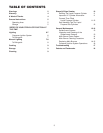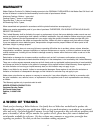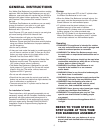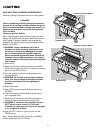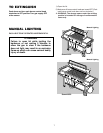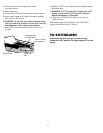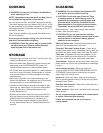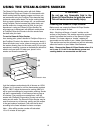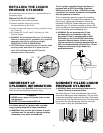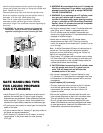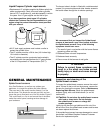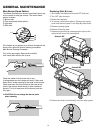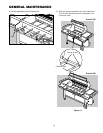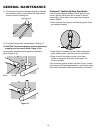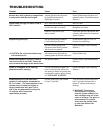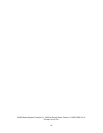Special offers from our partners!

Find Replacement BBQ Parts for 20,308 Models. Repair your BBQ today.

Buy Weber Grill Parts. It couldn't be easier. Find your Weber parts here.
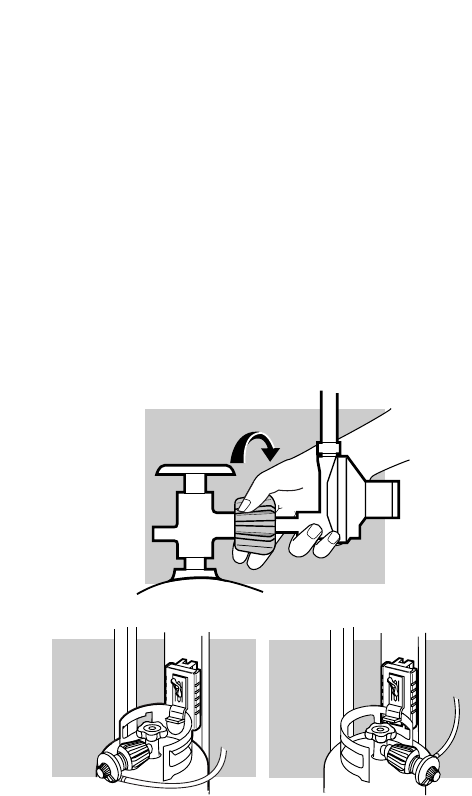
12
Hook the liquid propane cylinder onto the fuel gauge.
Loosen the cylinder lock wing nut. Swing the cylinder lock
down. Tighten the wing nut.
Remove plastic dust cover from the fuel cylinder valve.
Screw the regulator coupling onto the cylinder valve(1),
clockwise, or to the right. Hand tighten only.
Note: This is a new type of connection. It tightens
clockwise and will not allow gas to flow unless the
connection is tight. The connection requires tightening by
hand only.
ƽ WARNING: Do not use a wrench to tighten the
connection. Using a wrench could damage the
regulator coupling and could cause a gas leak.
(1)
SAFE HANDLING TIPS
FOR LIQUID PROPANE
GAS CYLINDERS
• Liquid Propane (LP) gas is a petroleum product as are
gasoline and natural gas. LP gas is a gas at regular
temperatures and pressures. Under moderate pressure,
inside a cylinder, LP gas is a liquid. As the pressure is
released, the liquid readily vaporizes and becomes gas.
• LP gas has an odor similar to natural gas. You should be
aware of this odor.
• LP gas is heavier than air. Leaking LP gas may collect in
low areas and prevent dispersion.
• To fill, take the LP cylinder to an RV center, or look up
"gas-propane" in the phone book for other sources
of LP gas.
ƽ WARNING: We recommend that your LP cylinder be
filled at an authorized LP gas dealer, by a qualified
attendant, who fills the tank by weight. IMPROPER
FILLING IS DANGEROUS.
ƽ WARNING: If you exchange your LP cylinder, make
sure you get a similar tank in return.Your LP
cylinder is equipped with a quick closing coupling
or type 1 valve and an OPD (Overfilling Prevention
Device). Other LP cylinders may not be compatible
with your barbecue connection.
• Air must be removed from a new LP cylinder before the
initial filling. Your LP dealer is equipped to do this.
• The LP cylinder must be installed, transported and
stored in an upright position. LP cylinders should not be
dropped or handled roughly.
• Never store or transport the LP cylinder where
temperatures can reach 125°F (too hot to hold by
hand—for example: do not leave the LP cylinder in a car
on a hot day).
Note - A refill will last about 20 hours of cooking time at
normal use. The fuel scale will indicate the propane
supply so you can refill before running out. You do not
have to run out before you refill.
• Treat “empty” LP cylinders with the same care as when
full. Even when the LP tank is empty of liquid there still
may be gas pressure in the cylinder. Always close the
cylinder valve before disconnecting.
ƽ CAUTION: When transporting the LP cylinder make
sure the plastic dust cover is in place over the
valve. This will keep dust and dirt from the
threaded portion of the valve.
• Do not use a damaged LP cylinder. Dented or rusty
LP cylinders or LP cylinders with a damaged valve may
be hazardous and should be replaced with a new one
immediately.
Liquid Propane (LP) Cylinder(s)
• The joint where the hose connects to the LP cylinder
must be leak tested each time the LP cylinder is
reconnected. For example, test each time the LP
cylinder is refilled.
• Be sure the regulator is mounted with the small vent
hole pointed downward so that it will not collect water.
This vent should be free of dirt, grease, bugs etc.
• The LP cylinder and connections supplied with your
Weber Gas Barbecue have been designed and tested
to meet government, American Gas Association, and
Underwriters Laboratories requirements.



